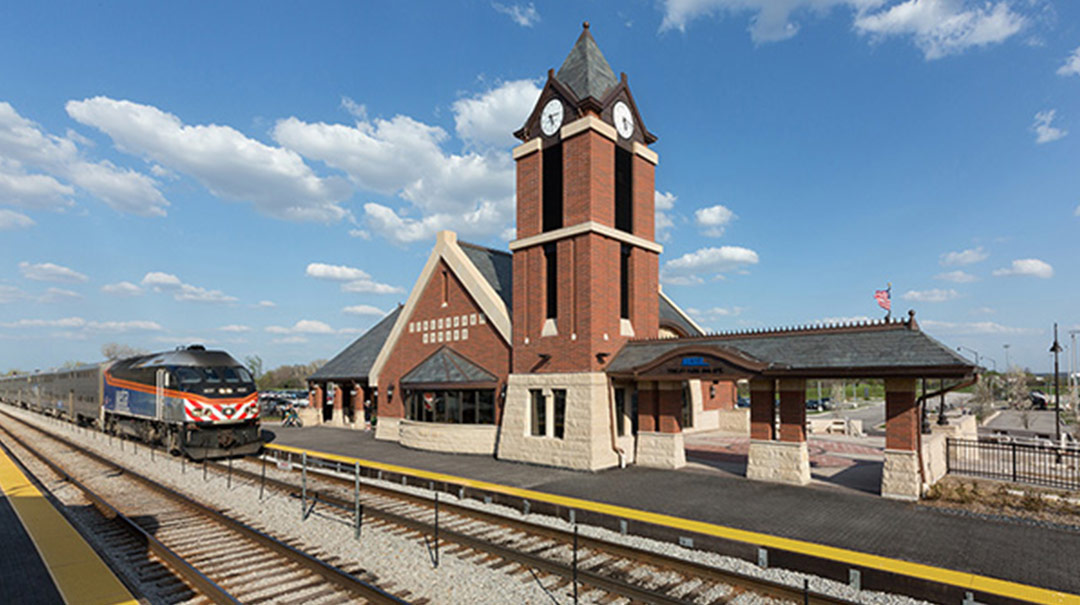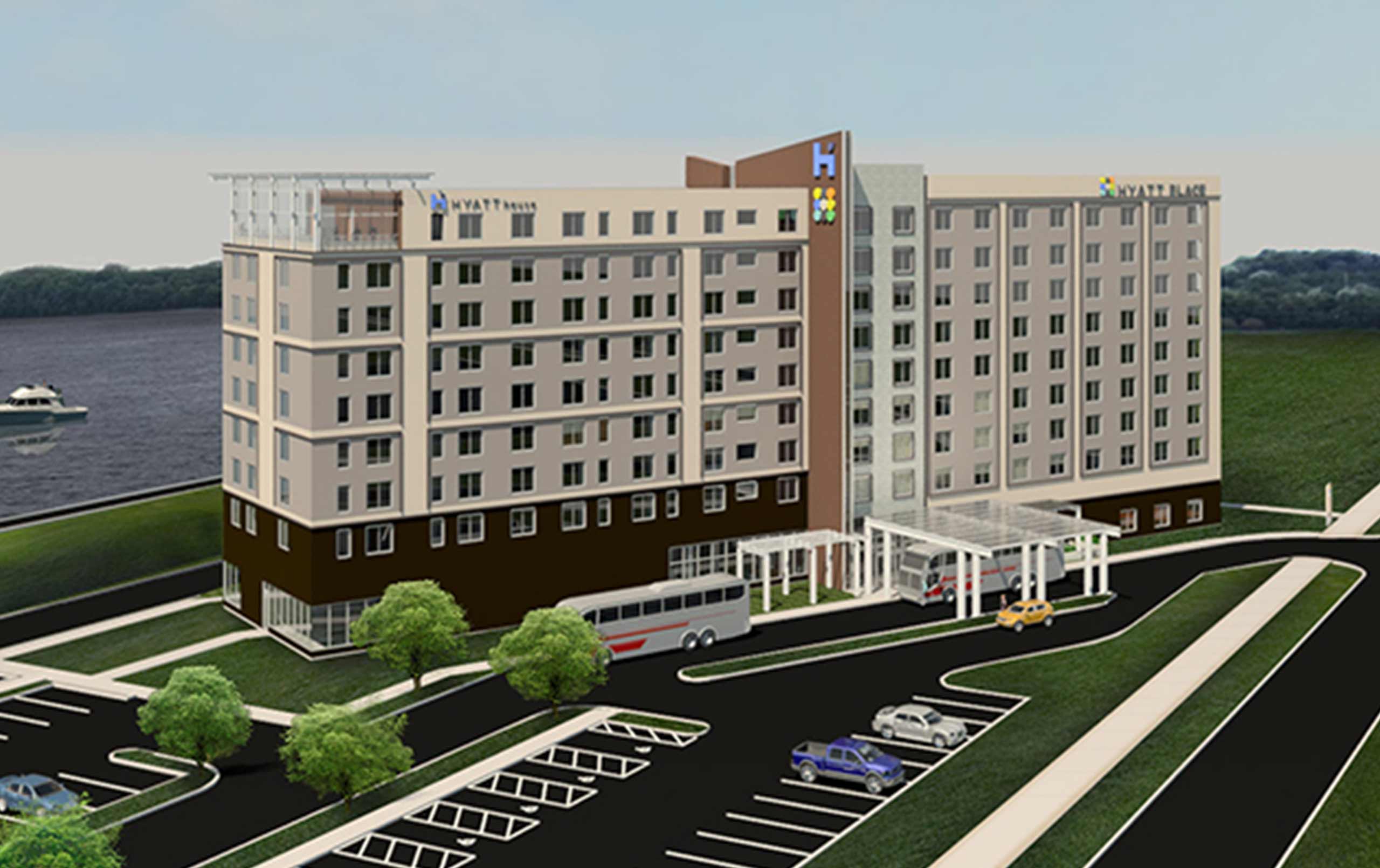
How building owners can achieve OSHA safety requirements using fall protection and fall restraint for all who go on their roofs
Does your roof have a raised warning line 15 feet from its edge? If not, you’re in violation of Occupational Safety and Health Administration (OSHA) roofing standards.
Do you have skylights? If yes, do they have a guardrail or other protective system? They should, according to OSHA. Same with roof hatches.
These are just a few examples of new OSHA roofing safety guidelines introduced in January 2017. They require “employers to provide protection for each employee exposed to fall and falling object hazards.” (Standard 1910.28 (a)(1)).
In other words, it’s now the responsibility of the employer to install rooftop protection measures for everyone who goes up on their roofs. Otherwise, employers can eventually get fined . . . or worse.
Below are a few roofing safety items related to OSHA’s guidelines. Most of the illustrated examples are from a campus-wide (24 buildings) roofing safety assessment and related upgrades that Legat Architects led for one of Illinois’ largest community colleges.
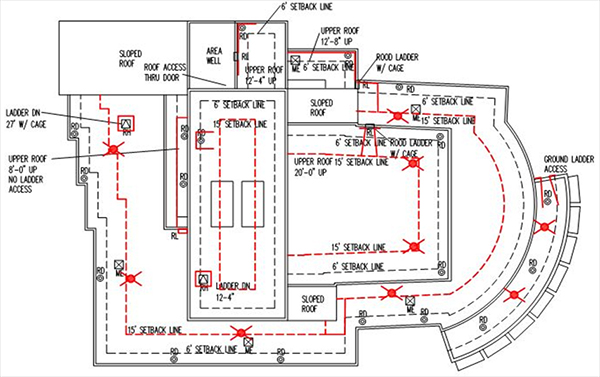
The Roofing Safety Zones
OSHA has designated three work zones on low-slope roofs with unprotected edges that are four feet or more above a lower level:
The EXTREMELY HIGH DANGER ZONE (less than six feet from the roof’s edge) requires one of the following:
- Guardrail system
- Safety net system
- Personal fall protection systems (e.g., personal fall arrest, travel restraint, positioning system)
- 42-inch-high parapet
The VERY HIGH DANGER ZONE (six to 15 feet from the edge) requires the same precautionary measures. However, in some circumstances where the work is “infrequent and temporary,” building owners can use instead a “designated area” (not just painting a line on a roof).
Ideally, all roof systems that require maintenance are located within the HIGH DANGER ZONE (15 feet or more from the edge) at the middle of the building. This zone provides a first line of defense with a 15-foot warning line. In the Midwest, you cannot simply paint a line on the roof—the first light snow would conceal it. Instead, it should be a line that is 39 to 42 inches high. Typically, lines are yellow so it’s clear to those on the roof that they’re not supposed to cross that line without OSHA-required restraints.
OSHA still recommends conventional fall protection systems within the high danger zone. Again, if the work is “infrequent and temporary,” no fall protection is necessary. However, employers must strictly enforce rules that prohibit workers from going beyond the 15-foot warning lines.
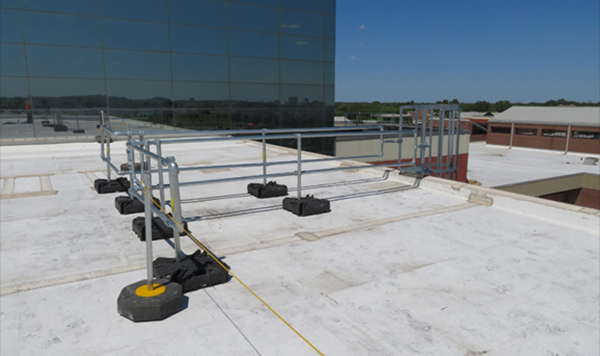
Guardrails and Ladders
Guardrails are a popular roofing safety option. Typically, rails are installed six feet from the roof’s edge. However, if there’s something near the edge like a condenser unit the edge that needs maintenance, guardrails must be placed right up to the edge.
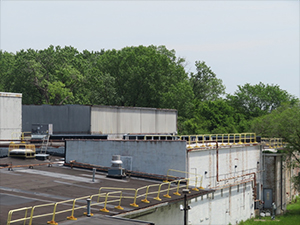
Guardrails also introduce an aesthetic challenge. For instance, some building owners install bright yellow rails around the perimeter of the roof. It meets OSHA standards, but it looks like the facility is constantly under construction and often takes attention away from other parts of the building. There are many alternative products that will help building owners meet OSHA requirements while avoiding this eyesore.
OSHA states that any ladders that rise 24 feet or more require a fall arrest system (e.g., ladder safety system, cage, well) attached to them. That applies to both existing and new ladders. The final deadline for meeting this requirement is November 18, 2036.


Skylights and Roof Hatches
Skylights and roof hatches (and any hole four feet or more above a lower level) need to have a cover or guardrail system around them. Skylights often have cages, which are not the most attractive option. However, they are easy and affordable. Moreover, since many skylights use frosted glass, people on the inside cannot see the cages. I recommend that building owners be cautious about skylights that meet OSHA safety requirements—product literature often states these skylights still need fall protection.
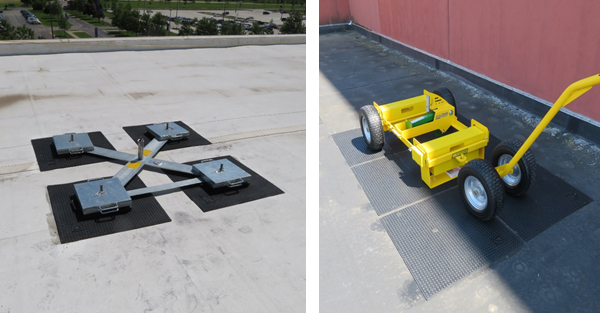
Restraint or fall arrest systems are another alternative for achieving safe roofs . . . especially for those that have many openings. For instance, employees can move around and tie off to a one-person cart. If the employee falls, the device digs into the roof—you’ll have a repair, but you won’t have any serious injuries.
Stationary fall protection systems can also support employees. However, since the costs of stationary and mobile systems are in the same ballpark, the mobile might be the better option considering that it provides more flexibility.
Another fall restraint system is the roof davit, which provides a cable that personnel can tie to. These have to be tested every 10 years.

At the Height of Roofing Safety
According to the U.S. Department of Labor, out 971 construction-related deaths in 2017, 381 (39%) were due to falls . . . falls that may have been prevented with the appropriate safety systems. Statistics like these have compelled OSHA to enlist building owners in achieving more stringent safety measures.
Still, I have talked to many building owners who are surprised that they are responsible for the safety of no matter who steps onto their roofs.
Who is on your building’s roof right now? Employees? Contractors? Whoever is up there, they shouldn’t be unless your facility meets OSHA safety requirements.
Contact us to learn more about roofing safety assessments or comment below to share your thoughts on this post.
